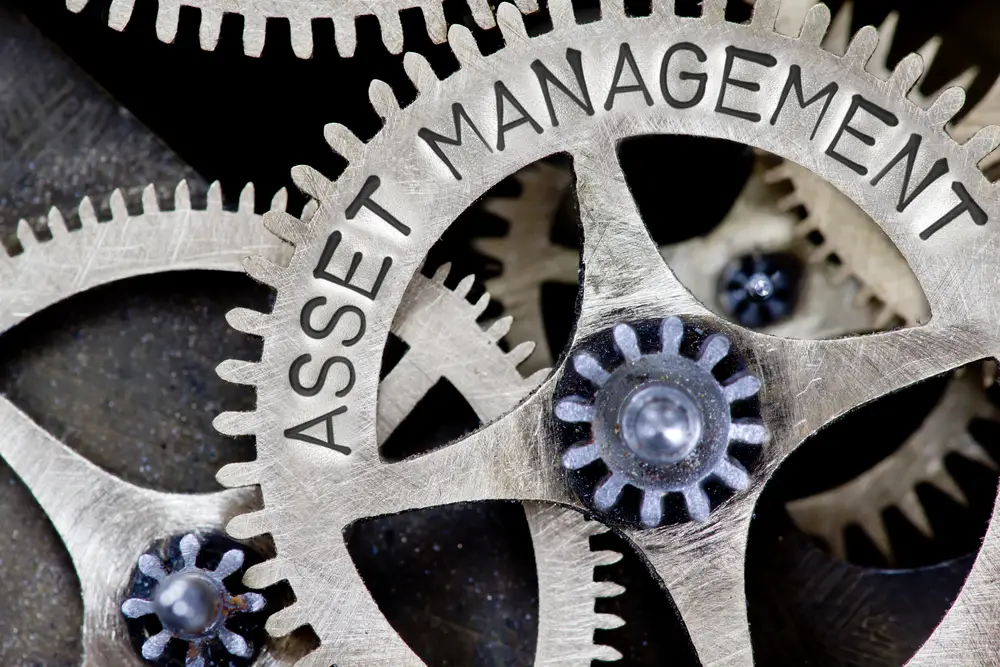An Asset management company has to consider various risks when dealing with investments. Risk is inherent in any investment, and it’s important that asset managers understand what these risks are and how they can be mitigated. One way to do this is by understanding key risk indicators (KRIs).
KRIs allow asset managers to identify potential risks early on, allowing them to make informed decisions about their investments.
Examples of KPIs include Mean Time To Failure (MTTF), Mean Time Through Repair (MTTR), Mean Time Between Failures (MTFB), First Fix Rate, Asset Utilization Rate, and Maintenance Cost per Unit. These KPIs provide insight into how well assets are managed, maintained, and utilized to maximize efficiency and minimize risk.
As asset management companies, Do you feel like your asset management investment strategy is missing something? Are you looking for an effective method to monitor key risk indicators? In asset management industry ?.Managers, investors, and regulators must stay current on the current market environment to protect investments and mitigate potential losses.
Understanding various Asset Management Key Risk Indicators can play a big role in helping define best practices when it comes to safety protocols and responsible investing. In this blog post, we’ll explore different key risk indicators associated with asset management investments that businesses have used across the world. Discover what tools are used most effectively among leading companies.
Examples of Asset management Key risk indicators
Asset Management Key Risk Indicators are metrics that measure the effectiveness of an organization’s asset management strategy. They provide insight into how well the organization is managing its assets and can help identify areas for improvement. The following are some examples of Asset Management Key Risk Indicators:
MTTF (Mean time to failure):
This metric measures the average amount of time it takes for an asset to fail. It helps identify potential issues with the asset or system before they become a problem.
This method determines when assets can fail. This statistic typically applies to products that cannot be repaired or needing replacing, such as lamps. This helps ensure the asset installation is correct and functions according to the specified requirements.
This can also indicate poor storage conditions, and poor supplier quality. Using lights as examples, again, could mean a manufacturing process may have caused the supplier to fail 50% sooner than anticipated, according to MTTF calculations.
It is calculated by dividing the total number of hours of operation by the total number of assets in use. This calculation helps determine how long a system will typically last and can be used to compare different system versions.
For example, if you have 10 light bulbs that have been in use for 1000 hours, then the MTTF would be 100 hours per bulb. This means that each bulb should last 100 hours on average before it fails.
To improve MTTF, it is important to ensure that all assets are regularly maintained and inspected for any signs of wear or damage. Additionally, using quality parts from reputable manufacturers can help reduce the likelihood of failure.

MTTR (Mean Time Through Repair):
This metric measures the average amount of time it takes to repair an asset after it has failed. It helps organizations determine if their repair processes are efficient and effective.
Mean Time To Failure (MTTF) is a maintenance metric measuring the average time a non-repairable asset operates before it fails. It is an important metric for understanding the reliability of a system and predicting how long it will last. MTTF can be used to compare different systems or components and identify areas where improvements can be made.
MTTF is related to another metric, Mean Time Between Failures (MTBF), which measures the average time between repairable failures of a technology product. While MTBF measures the time between one failure and the next, MTTF measures the total amount of time an asset can operate before experiencing any failure at all.
In addition to measuring reliability, MTTF can also be used to help plan preventive maintenance schedules and determine when parts should be replaced. By understanding how long an asset is expected to last, organizations can better plan their maintenance activities and ensure they are not wasting resources on unnecessary repairs or replacements.
The mean period to repair a property is the time needed to repair it. This PKI will give you insight into the repair of any given object as well as in the maintenance process. If repairs take longer than expected, they may require replacement.
This could also mean a maintenance firm must investigate its staffing practices if maintenance workers have not had adequate training. MTTR = Maintenance Time or Repair Cost.
It is calculated by dividing the total unplanned maintenance time spent on an asset by the total number of failures that asset experienced. This formula can be used to identify areas of improvement in maintenance processes and help reduce downtime.
The MTTR formula is relatively simple: divide the total unplanned maintenance time spent on an asset by the total number of failures that asset experienced. For example, if an asset had 10 hours of unplanned maintenance and experienced 5 failures, its MTTR would be 2 hours.
MTFB (Mean Time Between Failures):
This metric measures the average amount of time between failures for an asset or system. It helps organizations identify trends in their assets’ performance and plan accordingly.
The MTBF formula is simple: divide the total number of operational hours by the number of failures in that period. For example, if a system has been running for 1000 hours and there have been 10 failures, then its MTBF would be 100 hours. This means that, on average, the system will fail every 100 hours.
The MTBF formula can also be used to compare different systems or products and determine the more reliable one.
FF (Failure Frequency):
This metric measures how often an asset fails over a given period of time. It helps organizations identify potential problems with their assets and take corrective action before they become major issues.
Accuracy of CMDB/ITAM Tool:
This metric measures the accuracy of the information stored in a company’s Configuration Management Database or IT Asset Management tool. It helps organizations ensure that their data is up to date and accurate, which can help them make more informed decisions about their assets.
What are KRIs?
Key risk indicators (KRIs) are metrics that measures the likelihood of a particular risk materializing. They provide an easy way for asset managers to keep track of potential risks and take preventive action if necessary. KRIs also help asset managers identify trends in their portfolios over time, which can help them make more informed decisions about future investments.
For example, a KRI might measure the amount of money an investor has lost due to market volatility or the number of stocks that have underperformed compared to the rest of the market.
How Do You Use KRIs?
Once you’ve identified relevant KRIs for your portfolio, you need to develop strategies for managing them. This could involve setting up alerts so you’re notified when certain thresholds or triggers have been reached, conducting regular stress tests on your portfolio, or making changes to your investment strategy if needed.
The aim should always be to mitigate potential risks before they become an issue and protect your portfolio from unnecessary losses.
The asset management process consists of four key stages: planning, acquisition, operation, maintenance, and disposal. Planning involves determining what type of asset is needed for a particular purpose and how it should be acquired.
Acquisition involves purchasing or leasing the required asset. Operation and maintenance involve ensuring that the asset is properly maintained and operated so as to maximize its value over time.
What is a Key Performance Indicator?
Asset management KPI helps maintenance management assess an asset’s performance and gives visibility on problems and changes. Key Performance Index (KPIs) are measures of the effectiveness and quality of a business’s strategy to meet its goals.
A key performance indicator (KPI) is an essential tool for asset managers. The tool helps companies across any sector improve their plan decisions. As a result, KPIs are useful to companies that have identified a potential problem at all stages of a lifecycle asset. Learning more can help with a tracking process to measure progress.
Organisations commonly use the KPI tracker to evaluate their performance across the entire business cycle. Maintenance technicians use computer systems to track maintenance metrics such as asset performance. CMMS software can give a useful maintenance report that helps you make smarter investments in your asset.
Why are key performance indicators for asset management important?
Key performance indicators (KPIs) for asset management can help organizations measure their success in this area and identify areas where improvements can be made. KPIs provide a way to track progress over time and compare performance against industry benchmarks.
They also provide insight into how well assets are being managed, which can help inform decisions about future investments or changes in asset management strategies.
When your goal reaches its maximum level, you are able to develop a strategy for it that meets the goal. Identify assets and management elements needing improvement. Using faulty or misleading KPIs can give analysts, investors and decision-makers the wrong picture on how to manage assets.
Asset Management KPI Examples
Each business has its own specific strategy and needs different types of information. Several other KPIs can also be used across a wide range of companies. This article presents some commonly known asset management KPIs.
Mean Time to Repair (MTTR) is a measure of how quickly an asset can be repaired after it has broken down. It is calculated by dividing the total time taken to repair the asset by the number of repairs performed.
Mean Time Between Failure (MTBF) is a measure of how often an asset breaks down over a given period of time. It is calculated by dividing the total time between failures by the number of failures experienced during that period.
Overall Equipment Effectiveness (OEE) is a measure of how efficiently an asset is being used. It considers factors such as availability, performance, and quality to determine overall efficiency.
Conclusion
Asset management firms must understand key risk indicators (KRIs) in order to identify potential risks in their portfolios early on and take preventive action when necessary. KRIs provide an easy way for asset managers to track potential dangers in their investments so they can make informed decisions about future investments based on past performance data.
Utilizing effective KRI strategies will enable asset managers to minimize losses and maximize profits over time by taking proactive steps towards mitigating risks within asset manager their portfolios as soon as possible.

Chris Ekai is a Risk Management expert with over 10 years of experience in the field. He has a Master’s(MSc) degree in Risk Management from University of Portsmouth and is a CPA and Finance professional. He currently works as a Content Manager at Risk Publishing, writing about Enterprise Risk Management, Business Continuity Management and Project Management.



